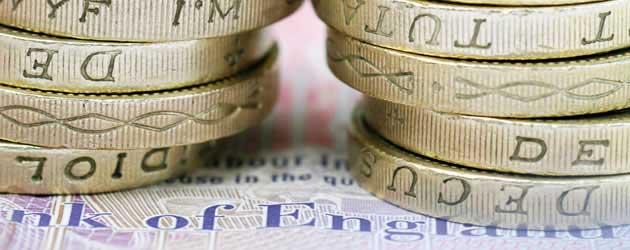
The Pound received a boost from the Confederation of British Industry yesterday as the CBI reported that Business Optimism surged to its highest level since April 2010.
Manufacturing was seen as a crucial ingredient in the recipe for British economic revival according CBI Economics Director Stephen Gifford:
“The Manufacturing Sector has increasing confidence in the UK’s recovery. New Orders and Output are continuing to grow steadily and expectations for the next three months are promising”.
In response to the report the Pound to Euro exchange rate improved by around half a cent, erasing the single currency’s earlier gains. Sterling also rose by around half a cent against the US Dollar, settling just above the 1.6200 level.
Prior to the CBI report the Pound was trading lower on the day against both EUR and USD, despite economic releases printing negatively in the United States and the Eurozone.
The latest Eurozone PMI surveys showed that Manufacturing and Services improved for the fourth successive month during October, but that output decelerated from 52.2 to 51.5. The deceleration in private sector growth is worrying for the currency bloc, because it could mean that the latest improvements in sentiment could prove to be another false dawn. On the other hand, the fact that the reports all remained above the 50.0 level that marks growth from contraction could indicate that October’s drop-off in performance is just a blip in a longer-term trend of growth.
The Euro did not falter in response to the data, perhaps suggesting that traders are confident that PMI performance will improve in November – a month when investor confidence is unlikely to be frayed by a 16-day shutdown of the world’s most influential government.
Across the pond in the United States, Initial Jobless Claims printed higher-than-anticipated at 350,000, adding more weight to the argument for the Federal Reserve to continue pumping $85 billion per month into the economy for the remainder of the year.
The Preliminary US Manufacturing PMI report also disappointed, coming in at 51.1 compared to predictions of 52.5. Whilst it is debatable whether European private sector output was affected by the federal furlough, it is fairly clear that American PMI performance was negatively impacted by the debt ceiling debacle.
The direction of GBP/EUR and GBP/USD is likely to be dictated by this morning’s third quarter growth print. A score of 0.8% is predicted, but the potential exists for either a stronger or a weaker result.
If Gross Domestic Product prints below 0.8% then Sterling could come under swift selling pressure as traders look to reevaluate their projections for a future interest rate hike. However, if the report flatters the British economy then the Pound is liable to rally strongly against the majors. If the report were to show a quarterly expansion of 1.0% then GBP/USD could reach 1.6300 for the first time since the first day of trading in 2013.

Comments are closed.